Church Of MO – 2010 Honda VFR1200F Review – First Ride

It’s remarkable to believe it’s been over six years since Honda introduced its somewhat revolutionary dual-clutch transmission in a production motorcycle. A common technology in sports cars, dual-clutch transmission technology hasn’t quite permeated its way into motorcycles. Honda still continues with the DCT today, and it’s a technology that we enjoy sampling, and we can thank the 2010 VFR1200F for bringing the tech to two wheels. Here, we get E-i-C Duke’s take on the bike and the transmission from its launch at the Sugo circuit in Japan. To see more pictures of the VFR1200F, be sure to visit the photo gallery.
2010 Honda VFR1200F Review – First Ride
Honda‘s big news for the 2010 model year is the new VFR1200F, a sporty sports tourer that can be had with an amazing new dual-clutch transmission – the first ever on a motorcycle. The VFR has drawn a wide-ranging variety of opinions. Is it a heavy sportbike or a lightweight super-sport-tourer?
It’s actually somewhere in the middle, as we found out after riding the VFR1200 on and around the Sugo Sportsland race circuit in Japan. Honda’s newest V-4 nestles into a spot between the smaller VFR800 and the more luxurious ST1300. The seemingly obvious competitors are the big sport-touring machines we compared in our 2009 Sport-Touring Shootout: the ST1300, Yamaha FJR1300, Kawasaki Concours 14 and BMW K1300GT. But our ride on the innovative Viffer revealed that it is sportier than that quartet, comparing most directly to the K1300S.
Compared to those bikes, the VFR has lower hand controls and the footpegs are set further back. It’s not uncomfortable, just slightly racier. An attractive seat resides 32.1 inches from the ground, and the narrower pair of rear cylinders allows legs a straight shot when stopped. A 0.6-inch lower seat is available as an option.
Behind the moderately high windscreen is a high-end gauge panel that includes all the info a rider could want. Front and center is an analog tachometer flanked by LCD displays for speed, fuel level, coolant and ambient temps, fuel consumption, a clock and a gear-position indicator. Reversed locations for the horn and turnsignal switches is said to be an ergonomic improvement, allowing quicker access to the horn, although you’ll be beeping instead of signaling until getting used to it. Surprising for such a technology-intensive machine, self-canceling signals aren’t part of the package.
The 1237cc V-4 emits a low-octave purr when fired up, and the 28-degree piston throw produces a sound distinct from previous Honda V-4s. From the side of the road, the exhaust note sounds not unlike a revvier BMW Boxer motor, but once at higher rpm when the exhaust valve opens up, the drone changes to a growl similar to a MotoGP bike. For more tech info, refer to our VFR preview here.
Honda’s press materials state the VFR’s engine produces 167 crankshaft horsepower at 10,000 rpm. My butt dyno estimated about 135 horses by the time they made their way through the transmission along the single-sided aluminum swingarm and shaft drive to the rear tire. Max torque of 95.1 ft-lbs arrives at 8750 revs, but just as important is that 90% of it is said to be available at just 4000 rpm. A ride-by-wire throttle – Honda’s first – helps keep the V-4 power as linear and refined as possible, and it pulls well from as low as 2500 rpm. A slight abruptness during throttle pick-up is a minor foible, but a smooth wrist keeps chassis pitching to a minimum.
The VFR1200F is big news on its own, boasting an interesting and satisfying motor, high-end finish quality and a wide performance envelope. But most impressive is its optional Dual-Clutch Transmission that enables riding without clutch or shift levers.
This is technology similar to that seen on many high-end sports cars, allowing the ease of an automatic transmission but with the directness of a traditional manual gearbox. As the name implies, two separate clutches are employed. While one is supplying drive to the rear wheel, the other has the next gear pre-selected and ready to transfer power in a seamless hand-off as soon as the rider or computer triggers it.
Honda’s DCT shouldn’t be seen as a crutch for riders unable to operate a clutch lever, and it’s not at all similar to the primitive auto-trans system on Yamaha’s FJR1300AE. An electronic brain controls hydraulic circuits and solenoid valves located behind the right-side engine cover. Clutch take-up is firm but smooth, pulling away from a stop as cleanly as a well-trained clutch hand – quite unlike the confidence-sapping FJR-AE setup.
| A VFR rider has the choice of three ways to play the DCT: |
| – D mode: The one I’d use to transport my mother. Shifts are very smooth, and the computer program forces early upshifts for optimum fuel economy. Perfect for two-upping or trolling through heavy traffic. |
| – S mode: My favorite, holding gears much longer and deftly blipping the throttle on downshifts. |
| – Manual mode: Gear-changes happen only at the bequest of a rider’s left hand, upshifting with an index finger; downshifting with a thumb trigger. |
We were given one session with the DCT on the Sugo circuit, and I fully expected the various demands of racetrack riding to trip up the newfangled tranny. Surely it was going to shift up or down at inopportune times, or so I thought.
My theory had merit when exiting the pit lane in D mode. It quickly upshifted to fifth gear even at low speeds, so I decided to click the S button on the right handlebar’s switchgear. What came next was an unforgettable riding experience.
The S setting keeps the revs up for optimum response, and full-throttle upshifts occur at 9800 rpm, a bit short of the 10,200-rpm rev limiter. When hitting the brakes, the computer knows when to downshift and expertly blips the throttle to match revs, allowing engine braking to help bleed speed. Downshifts are always smooth and not jerky.
My biggest concern was an unanticipated downshift when leaned over in the middle of a turn, but it never came. I thought for sure the DCT used a bank-angle sensor to prevent such a situation, but it doesn’t.
There were a few times I wished the DCT would’ve selected a lower gear so the revs could be closer to the power peak, and this ultimately hinders lap times. But the V-4 has so much power, it pulls well even if in a gear high.
The DCT has an advantage over the manual tranny by being smoother on upshifts. Sugo’s last corner dumps a rider into an increasing-radius right-hander and onto the front straight. An upshift on the manual-trans variant slightly upsets the bike. No such issue on the DCT, as I could remain hard on the throttle while the dual clutches seamlessly passed off gears two to three, etc.
How much did I like the DCT? Enough to be oblivious to the checkered flag at the end of my session – I blasted around Sugo for three extra laps. I’m very much looking forward to spending more time with this techno wonder. But, from what I know thus far, I’d pick the DCT over the standard transmission if the price was equal. It won’t be, but I couldn’t be more impressed.
Not many sport-touring bikes will ever be taken to a racetrack, but Honda’s confidence in the sporting qualities of the VFR gave us the opportunity to ride it on the 2.4-mile Sugo circuit. It only takes a few corners to realize this is no CBR – a fairly relaxed 25.5-degree rake angle and 60.8-inch wheelbase assures that, as does its 589-lb weight, full of fluids and fuel. Regardless, turn-in response is quicker than most of its competitors. A BMW K-13 probably comes closest.
We also had the opportunity to take the two versions of VFRs on the perimeter road around Sugo where we could sample the bike at street speeds. It was more at home in this environment, feeling less ponderous and exhibiting neutral steering – it’s more agile than a Concours or FJR.
Grip from the VFR’s Dunlop Roadsmart tires was better than expected for a sport-touring tire on a racetrack. There is plenty of available lean angle before the Honda’s footpeg feelers touch down, and all but the most insane riders won’t have any clearance issues on the street.
The standard transmission has a pleasingly light shift action, and it has an advantage over the DCT option with its utilization of a slipper clutch that eases high-rev downshifts. But it’s not perfect, as out on the track it once popped out of third gear on me. Other riders had more frequent issues, although I’m guessing it had something to do with max-rpm shifting on low-mile pre-production bikes.
Blasting around a racetrack in full attack mode also revealed the effects of the shaft drive subtly jacking the rear suspension. The shaftie also has the side effect of making the rear tire suffer for traction in the same way as the Star Vmax. Dumping the clutch to do a wheelie out of the pits instead smoked the rear tire.
Although Sugo’s front straight isn’t very long, the VFR’s gutsy motor accelerated up to 150 mph before having to nail the brakes. The Combined ABS system feels quite powerful, using dual 6-piston calipers biting on 320mm discs up front and a 276mm/2-pot combo out back. Actuating the rear brake also applies two pistons on the front-left caliper. Stomping on the rear brake pedal slows the bike as quick as you’d like in most street situations, but really hard stops require the front lever. The anti-locking system is pleasantly unobtrusive.
Honda’s concept for the VFR1200 was “sport and touring with premium quality,” and within those terms it has certainly succeeded. Honda haters may deride its appearance, but seeing the Viffer in person brings into focus its high level of fit and finish and its graceful design. That said, its droopy headlight and layered fairing require some acclimatization.
The VFR’s biggest hurdle to success might be the MSRP Honda will soon be announcing. We’ll guess the standard version will start at around $15,000. Add options like the DCT, hard luggage, heated grips and centerstand, it might be nudging the $20K mark.
Overall, it’s too large to be a sportbike, and it’s too sporty to be a luxurious sport-tourer. But for some, it might just be perfect combination of both. In about two months, we’ll get another chance to ride the appealing new V-4 so we can provide a more comprehensive street report in January.

Troy's been riding motorcycles and writing about them since 2006, getting his start at Rider Magazine. From there, he moved to Sport Rider Magazine before finally landing at Motorcycle.com in 2011. A lifelong gearhead who didn't fully immerse himself in motorcycles until his teenage years, Troy's interests have always been in technology, performance, and going fast. Naturally, racing was the perfect avenue to combine all three. Troy has been racing nearly as long as he's been riding and has competed at the AMA national level. He's also won multiple club races throughout the country, culminating in a Utah Sport Bike Association championship in 2011. He has been invited as a guest instructor for the Yamaha Champions Riding School, and when he's not out riding, he's either wrenching on bikes or watching MotoGP.
More by Troy Siahaan































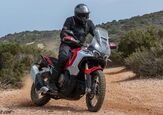

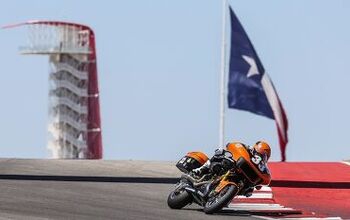



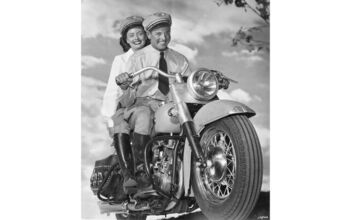






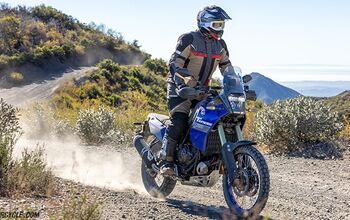

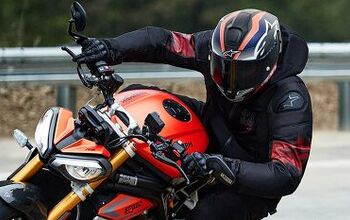



Comments
Join the conversation
have 16k on a CTX700/ DCT-ABS. best ride, transmission is very smooth and peppy. like the paddles, as you can manually shift in D or S mode. 700cc is nice, 1200cc would be awesome. dig the CTX because ergonomics fit me well...
I bought a 2012 model in June (not DCT) and so far have put
on Helibars, a Givi screen, a Honda option lowered seat and 7,000+ miles. Best
bike I have ever owned.
It’s not too big – I’m 5’5” & 145lbs (used to be taller
but I’m 68 and shrinking) handles easily at low speeds and just rips in the
canyons & mountain passes.
It has great range – I average 45 mpg and easily outlast all
of my riding buddies.
It’s not too expensive – well under 10K for a new bike that
was still in a crate.
I keep looking at (and test riding new bikes) just for fun,
but I’m keeping the VFR for the long haul.